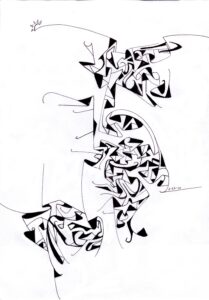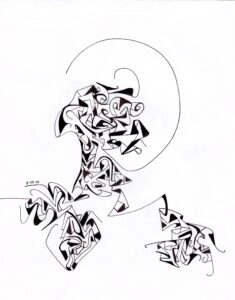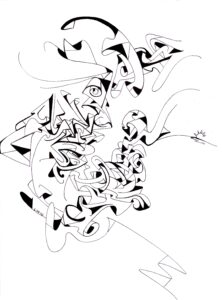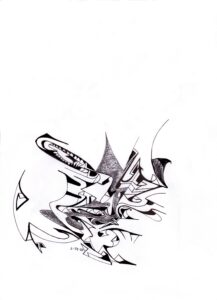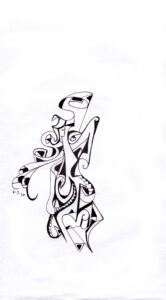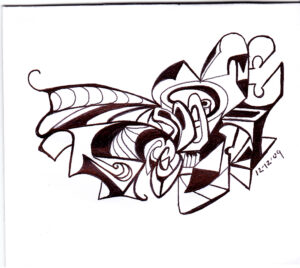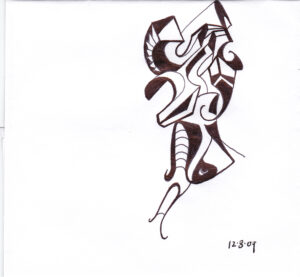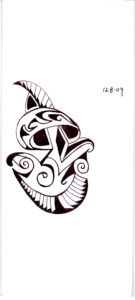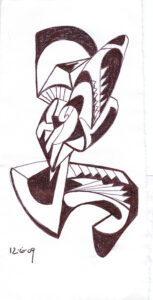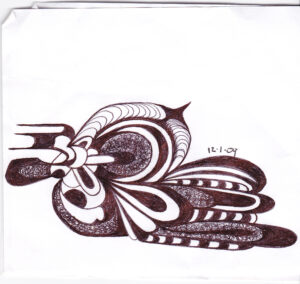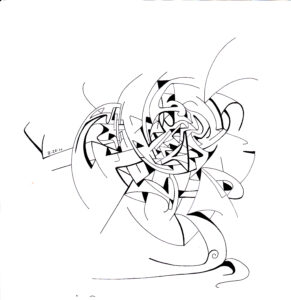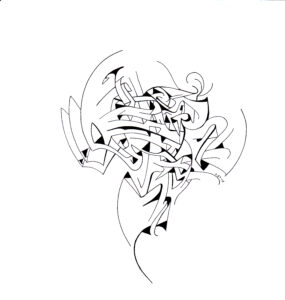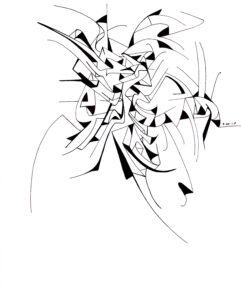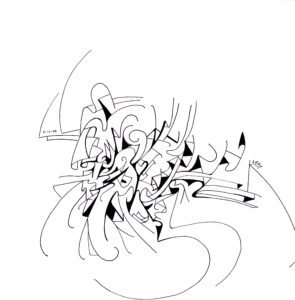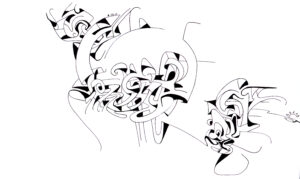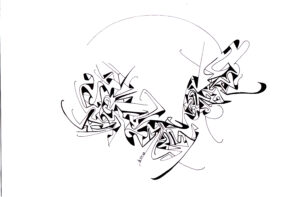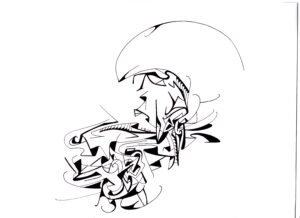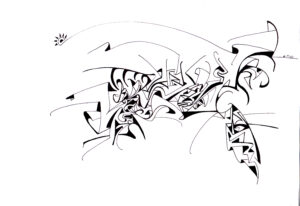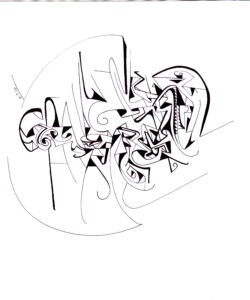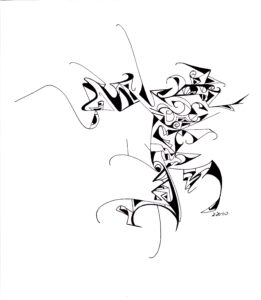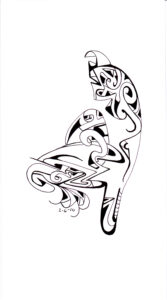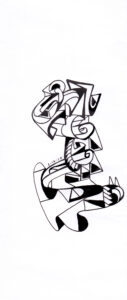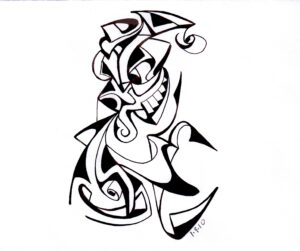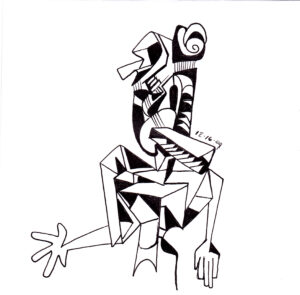These drawings were created while working as a mental health technician from 2009-2012. I’d spend an 8 or 16-hour shift on a locked ward with a maximum 30 “clients.” We’d see to the client’s well being, comfort, and maintain a sense of order. We observed and we listened. Listening for changes in conversation or tones of voices that could be triggers for an emotional or violent outburst.
Walking around the unit with a clipboard and a stack of blank white paper, the drawings were random line formations, at first following in my interests in the Tribal Art of modern tattoo designs and a collaboration of ceremonial art work of indigenous tribes such as the Maori of New Zealand, Mentawai of Indonesia, along with Celtic and Aztec patterning.
The drawings always attracted attention from both staff and clients. Each would attempt to decipher images or words within the design; some would see faces or figures within the ornamentation. With each drawing I began incorporating concepts of composition and perspective, borrowing heavily on techniques used by such artists as Dali and Piranesi to create an illusion of perceived space and distance.
As progression of the drawings continued so did the conversations. Stories of tattoos and events from the past that led to predicaments of the present became topics of introduction between the client and myself. Residents would seek me out to see my latest creation as a pretext to convey that which no one had been available to listen. Stories of addiction, loss, perceived persecution, religious paranoia, and obsession, mistakes made at the cost of loved ones.
And the drawings progressed. What started as flat curvilinear patterns became complex designs with the illusion of space and movement. Thick black lines became finely designed shapes where varying width of line advanced the illusion of multiple levels. Small, tightly formed imagery developed into open, finely detailed line works of figurative movement. The drawings were becoming affected by the mind-set of those around me. Distinct commonalities were occurring on days of elevated stress as compared to the days of relative calm, most notably in the use of thicker and thinner line work.
I set up rules that guided the creation, such as where and when lines can intersect, what shapes can be filled in and in relation to the lines around it, what parts of the drawing has to remain open to the negative space. Each drawing is a puzzle, a game that starts with a few randomly placed lines, the final image unknown until it begins to take the shape of a recognizable or desirable conclusion.

